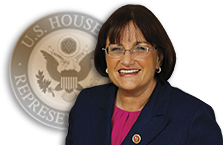Press Releases
Reps. Kuster, Fudge, Bustos, Pingree Sound the Alarm on USDA Failure to Help Small Farms, Farmers of ColorImplementation of Payments Under the CARES Act and Farmers to Families Food Box Program Overlooks Critical Minority-Owned Farms; Farmers to Families Program Failed to Meet Goal of 40 Million Food Boxes Delivered by June
Washington, DC,
August 4, 2020
– Yesterday, Reps. Annie Kuster (NH-02), Marcia L. Fudge (OH-11), Cheri Bustos (IL-17), and Chellie Pingree (ME-01) led a group of 19 House Democrats in a letter to the United States Department of Agriculture (USDA) Secretary Sonny Perdue sounding the alarm on the USDA’s failure to help small farms, farmers of color, beginning, minority and veteran farmers, and others through its implementation of direct payments to farmers and ranchers under the Coronavirus Aid, Relief, and Economic Security (CARES) Act, and Farmers to Families Food Box Program. “It has become abundantly clear that direct payments to producers have largely overlooked small farms, and those that are owned by beginning, veteran, minority, and socially disadvantaged farmers. The need amongst these stakeholders is significant,” the lawmakers wrote. “As you know, farmers of color have long faced documented discrimination from USDA programs, and little has changed to slow the decline of the number of black farmers and their acreage from where they were a century ago.” In addition to concerns about the impact of the USDA’s implementation of the programs on critical minority-owned and small farms, the lawmakers also questioned the criteria used to award large contracts under the Farmers to Families Food Box Program. They called into question the fact that producers with strong connections to food supply chains in their region were passed over for companies that lacked experience working with food banks or in wholesale food distribution. The group also noted that to date, the Farmers to Families Food Box Program has failed to meet its goal of delivering 40 million boxes by the end of June and has not provided information on which non-profits have received boxes in each state. A signed copy of the letter can be found here, and the full text is below. August 3, 2020 The Honorable Sonny Perdue Secretary of Agriculture U.S. Department of Agriculture 1400 Independence Avenue, SW Washington, DC 20250 Dear Secretary Perdue, We write to express our concerns regarding the Department of Agriculture’s (USDA) implementation of the Coronavirus Food Assistance Program (CFAP); both the direct payments to farmers and ranchers as mandated by the Coronavirus Aid, Relief, and Economic Security (CARES) Act, as well as the Farmers to Families Food Box Program. It is imperative that these programs not only keep Americans fed during the current pandemic, but also serve as smart investments in sustainable agriculture systems and the food supply chain. It has become abundantly clear that direct payments to producers have largely overlooked small farms, and those that are owned by beginning, veteran, minority, and socially disadvantaged farmers. The need amongst these stakeholders is significant. According to the USDA’s most recent census, farms comprising less than nine acres and those owned by producers under 35 have risen by 22% and 11% respectively. As you know, farmers of color have long faced documented discrimination from USDA programs, and little has changed to slow the decline of the number of black farmers and their acreage from where they were a century ago. All of these farming operations are increasingly essential to the sourcing of local, sustainable food, but USDA has not adequately ensured their access to CFAP funds. For this reason, we request that USDA provide responses to the following:
Regarding the Farmers to Food Box program, this effort has been more successful in certain cities and regions than others. While we are happy to hear of success stories, there are also very apparent flaws and inconsistencies in the implementation of the program. Some applicants who were selected to distribute large contracts of food have lacked experience working with food banks and wholesale food distribution, while other companies with strong connections to food supply chains in their region were inexplicably passed over. The program also failed to meet its goal to deliver 40 million food boxes by the end of June and, to date, USDA has not provided any clarity on which specific non-profits received food boxes in each state. Additionally, we’ve heard that many food banks with long-standing relationships with USDA’s Food and Nutrition Service are unclear as to who to contact at the Department to share feedback or concerns about the program. For this reason, we request that USDA provide responses to the following:
In addition, please provide the executed apportionment for USDA’s COVID-19 response. Sharing this information will help provide clarity on the amount of funding the Department has allocated to assist farmers, producers, distributers, and other agriculture and nutrition stakeholders during the pandemic. This includes emergency relief activities supported by funds made available under section 32; the Commodity Credit Corporation; the Families First Coronavirus Response Act; the Coronavirus, Aid, Relief and Economic Security (CARES) Act and other sources. Through all the challenges COVID-19 has presented to our food systems, we remain confident that well-planned and executed programs can strengthen America’s farmers, ranchers, producers, and suppliers for the long-term while feeding those who are hungry during the pandemic. We appreciate your immediate attention to this matter and look forward to your prompt reply to this letter. Sincerely, ### |
